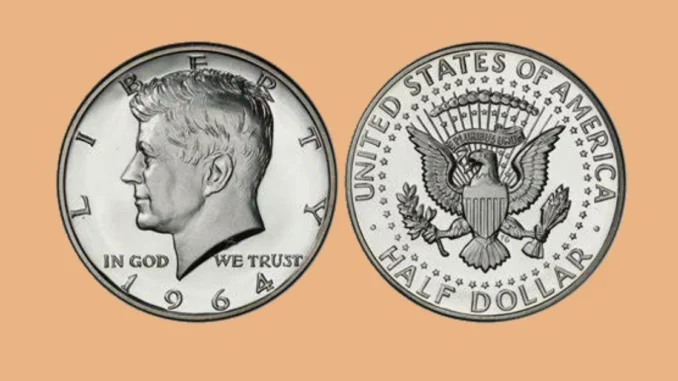
The Kennedy half dollar, first minted in 1964, has captivated collectors and enthusiasts for decades. This iconic coin commemorates the legacy of President John F. Kennedy, who was tragically assassinated in 1963. With its historical significance and unique variations, some Kennedy half dollars are now worth thousands of dollars—especially the elusive 1964 Special Strike.
Table of Contents
The Birth of the Kennedy Half Dollar
The Kennedy half dollar was introduced as a tribute to the 35th President of the United States, replacing the Benjamin Franklin half dollar. Minted in 90% silver and 10% copper, the coin’s design remains unchanged since its debut:
- Obverse: A portrait of President Kennedy facing left.
- Reverse: A heraldic eagle holding an olive branch and a bundle of arrows, symbolizing peace and independence.
The Design and Minting of Bicentennial Coins
Bicentennial Quarter Errors: A Collector’s Dream
Top 5 Rare Bicentennial Quarters to Add to Your Collection
Bicentennial Budgeting: How Americans Managed Finances in 1976
Evolution of the Metal Composition
The Kennedy half dollar’s metal composition has evolved over the years:
- 1964: Minted with 90% silver and 10% copper.
- 1965–1970: Due to a copper shortage, coins featured a core of 79% copper with an outer layer containing 80% silver and 20% copper.
- 1971–Present: The coins transitioned to a composition of 75% silver (outer layer) and a pure copper core.
The shift reflected changes in material availability and economic demands, making earlier silver coins particularly valuable to collectors.
Key Variants and Their Value
- 1964 Kennedy Half Dollar:
- The inaugural coin minted in San Francisco, Denver, and Philadelphia.
- 156,205,446 were produced, marking it as a historical milestone.
- 1964 Special Strike Kennedy Half Dollar:
- The rarest and most coveted Kennedy coin, known for its matte finish and intricate design details.
- Features a smooth surface with well-defined edges, free of contact marks typically found on regular proof coins.
- Only 12 authenticated coins exist, as confirmed by the Professional Coin Grading Service (PCGS).
- A 1964 Special Strike graded SP68 sold for a staggering $156,000 at auction.
- 1964 Hair Accent Kennedy Half Dollar:
- Early versions had sharply defined hairlines on Kennedy’s portrait, a design later softened at the request of Jacqueline Kennedy.
- These limited coins remain highly sought after.
- 1965–1970 Silver Coins:
- While more common, these coins are still valuable due to their silver content and historical significance.
The Modern Era: Collectible Kennedy Coins
After 2002, the U.S. Mint limited Kennedy half dollar production, primarily issuing them for collectors. In 2022, however, the Federal Reserve ordered increased circulation, making modern Kennedy half dollars accessible to the public.
Quick Reference Table: Kennedy Half Dollar Highlights
| Year | Mint Locations | Metal Composition | Special Features |
|---|---|---|---|
| 1964 | San Francisco, Denver, Philadelphia | 90% Silver, 10% Copper | First Kennedy half dollar |
| 1964 Special Strike | San Francisco | 90% Silver | Rare matte finish, smooth design |
| 1965–1970 | San Francisco, Denver, Philadelphia | 79% Copper (Core), 80% Silver (Outer Layer) | Metal composition shift due to copper shortage |
| 1971–Present | San Francisco, Denver, Philadelphia | 75% Silver (Outer Layer), Pure Copper (Core) | Standard mintage |
Why Collectors Value Kennedy Half Dollars
From their silver content to their historical importance, Kennedy half dollars represent a piece of American heritage. Rare variants, such as the 1964 Special Strike, are prized not only for their scarcity but also for their craftsmanship and enduring symbolism.
If you’re curious about your coins’ value, visit expert sites like Coin Value or consult a professional grading service. Who knows? That Kennedy half dollar in your collection might just be worth a small fortune!
Leave a Reply